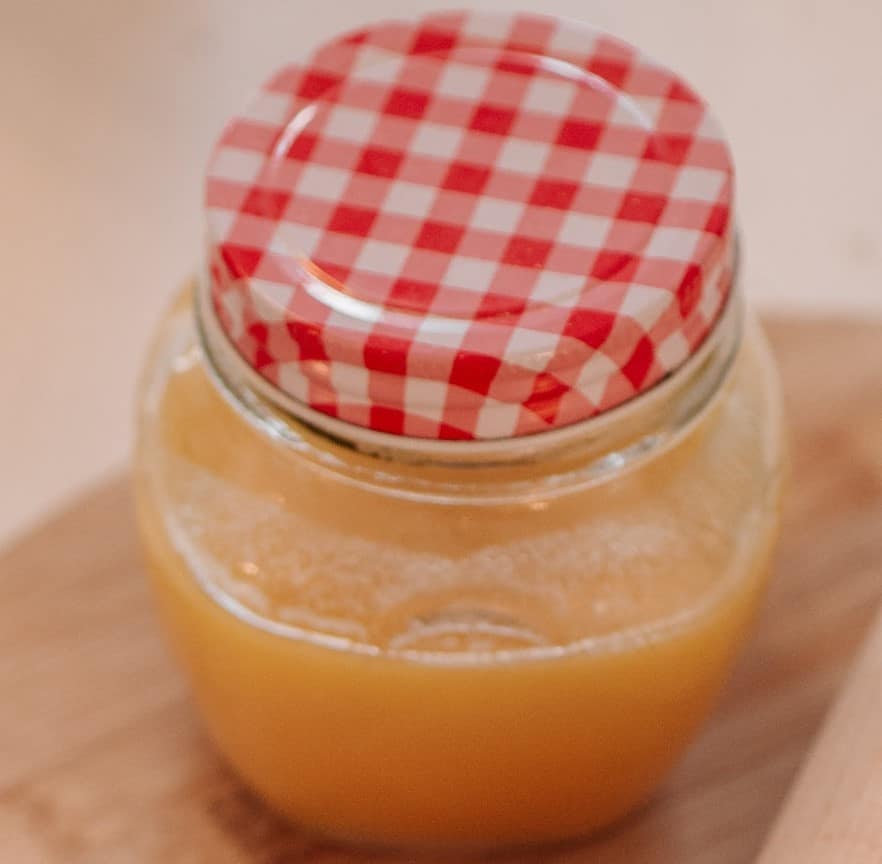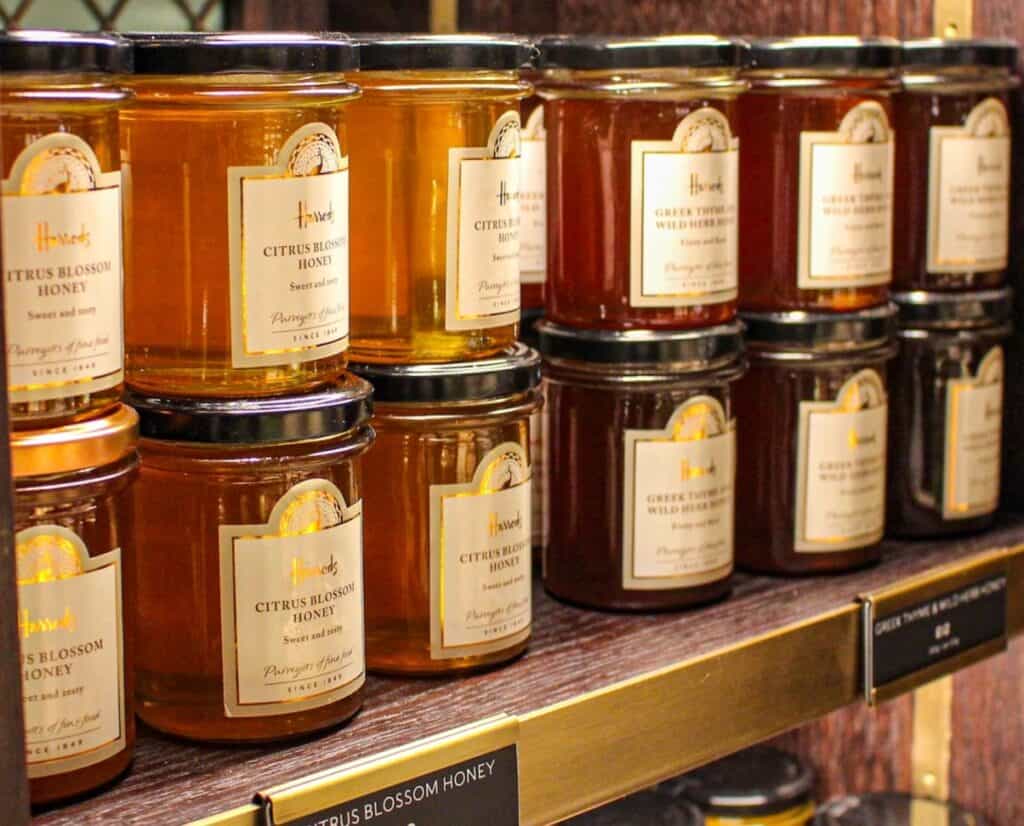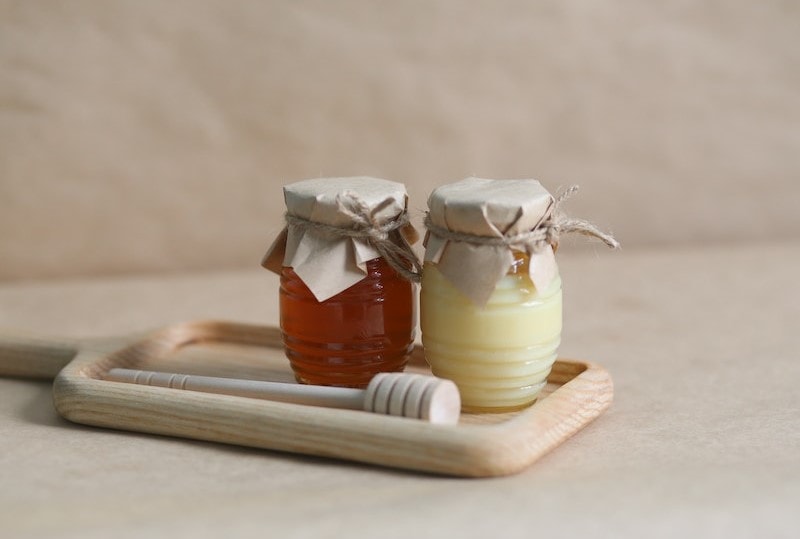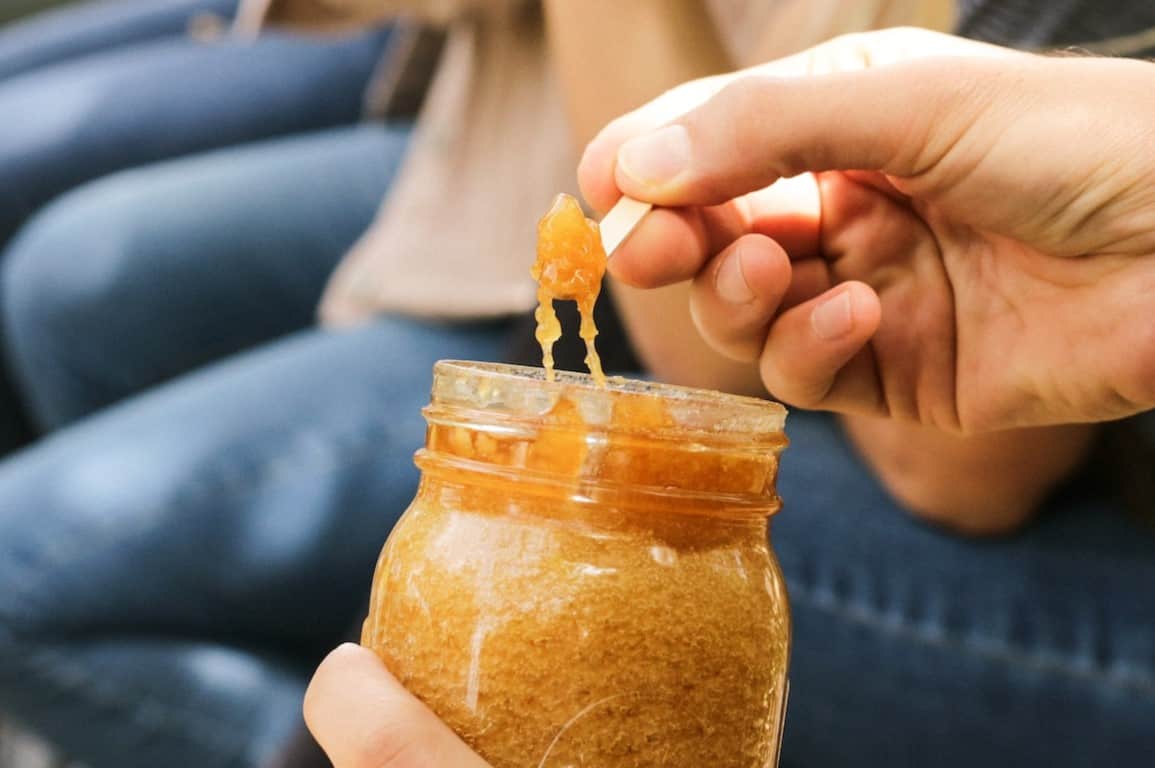Honey is quite the treat, isn’t it? I’ve tried to eat healthy several times, but the bad stuff just tastes so good. The one exception is the tasty treat from Mother Nature’s processing plant.
It goes on pastries and sweetens your beverage. The only hiccup I can think of when it comes to honey is its tendency to solidify. So, how do you keep honey from crystallizing?
Many people who don’t understand honey get very suspicious when presented with a solid mass labeled honey.
Most people will think that the solid matter is debris from some terrible additives that unscrupulous packers add to give them a greater profit. But, as you probably know by now, that couldn’t be further from the truth.
All honey, even the most raved-about honey brands, crystallize. Therefore, in order to understand how to prevent it, we need to understand why it happens in the first place.

Why Does Honey Crystallize?
The short answer to why many types of honey crystallize is science. Honey is comprised mostly of sugar. You have trace elements of other things, such as pollen, wax, and bee parts, but over 75% of them are glucose and fructose.
It is a supersaturated solution, meaning it holds a lot of sugar in a small amount of water. The highest quality honey contains less than 18% moisture, which is quite low for a solution that contains dissolved sugar.
When you think about it, putting three teaspoons of sugar like this in a cup of tea will probably lead to some sugar crystals settling at the bottom of the cup. With time, the same thing happens to honey.
When honey forms crystals, the moisture content of the honey increases because the formation of the crystals releases the water molecules.
Since this is a supersaturated solution, the moisture content is still very low, so you will easily wind up with a full jar of completely crystallized honey rather than have a few crystals at the bottom of the jar.
Not All Honey Crystallizes at the Same Rate
Now, the other problem is, if all honey crystallizes, then how come I can buy one brand which remains liquid for months and another that solidifies even before I’ve had my first taste?
Well, mother nature likes to keep things interesting. As mentioned above, the sugar in honey is mainly glucose and fructose.
As a scientific formula, they are the same, but they have different qualities, especially when it comes to crystallization. Nectar in plants contains complex sugars, namely sucrose.
The bees have a special enzyme that breaks this down to glucose and fructose (that’s why it’s easier for our bodies to digest, half the work has already been done for us).

Honey That Contains More Glucose Than Fructose Will Crystallize Very Fast
Now, honey that contains more glucose than fructose will crystallize very fast. If it contains more fructose, you’ll enjoy your liquid gold for months, even years.
Unfortunately, you don’t get to limit where your bees go to forage, so you can’t really dictate where your bees get their daily bread from.
So far, it would seem that nectar from most tree sources is rich in fructose, and therefore, honey from trees such as avocado and tupelo remains liquid.
On the other end of the spectrum, we have weeds and shrubs and annuals such as canola, which can crystallize before it’s out of the comb.
So the bad news is unless you own all the land within a three-mile radius of your bees, you probably can’t control what your honey is made of. So what are your options?
How To Keep Honey From Crystallizing
There are two primary methods that you can use to keep honey from crystallizing: pasteurizing/heating and microfiltration. We further explore both below.
Pasteurizing/Heating
This is a commercial solution. Most honey is heated to make packing easier. Honey can be very viscous, which slows down the packaging process significantly.
Most commercial traders heat the honey to ensure that the entire batch is at the same temperature, making it less viscous. Honey is also pasteurized to avoid possible contamination.
As a result, you may find some commercial brands take longer to crystallize than the honey you harvested in your backyard.

Microfiltration
Crystals need to form around something. It’s similar to the concept of a foundation for a house. If they don’t find a base, they are unlikely to form.
These ‘seeds,’ as they are called, are comprised of bits of pollen, wax, dust, air bubbles, and other honey crystals.
Creamed honey like this, whose name is deceptive, is simply liquid honey whose crystallization process has been controlled by mixing it with crystallized honey.
Microfiltration involves the removal of all foreign bodies, including tiny specs of dust that might form a base for crystal development. Hence, this process keeps honey from crystallizing.
Some of these particles are invisible to the naked eye, hence the need for a micro-filter.
How to Deal With and Soften Crystallized Honey
The one thing we can be certain of is that, at some point, you will be faced with a jar of crystallized honey, especially during the cold season.
Crystal Size
Crystallized honey varies in texture because some form large crystals while others are constituted by numerous tiny crystals.
Larger crystals are more difficult to deal with because the mass formed is usually very hard. Alternatively, smaller crystals are easier to work with and are actually great for spreading on toast.
Heating the Honey Vs. Using it As-Is
When faced with a jar of solid natural honey, you have two options.
Heating Honey to De-crystallize It
First, put the honey jar in some warm water (about 35°C) for about 20-30 minutes. Wait for the crystals to resume their liquid state.
If the honey remains crystallized, remove the jar of honey and re-heat the water. Once it is about 35°C, submerge the jar again in the warm water for another 20-30 minutes or until the honey turns liquid.
The Dangers of Heating Honey
Heating honey causes it to lose some of the enzymes that attract us to the honey in the first place. It also affects other features, such as its smell and looks over time.
If you can scoop the honey with a spoon anyway, why not do so without liquifying the whole jar every time you need a teaspoon of it?
Embrace the Crystallization Process
The second option is to use honey as it is.
Creamed honey is a great way to embrace the crystallization process. It’s just as pure as the liquid but has been crystallized in a controlled environment, giving it a creamy texture.
When you are not picky about its texture, it is good to eat crystallized honey once in a while.

Keep Honey from Crystallizing or Enjoy it Crystallized
Don’t let honey crystals keep you away from a healthy reward for your sweet tooth.
Crystallized raw honey is still good honey. Honey crystallization is a naturally occurring process. It does not mean the honey has gone bad or spoiled. Raw honey is good, regardless of the state it’s in.
In fact, some people prefer crystallized honey because it has a thicker consistency that makes it work like a jam. But if you really prefer liquid honey, again, there are ways to fix crystallized honey. You can easily liquefy honey from its semi-solid state by gently heating it in a warm water bath or microwave.
It’s important to note that honey should not be consumed if it has an off odor, a weird flavor, or if it has any mold growth. These are the basic signs that your honey has gone bad and should be discarded.


I love this lesson on crystallisation of honey. I have some people who have opted not to buy honey because it would be crystallised.
Thanks for the info, very interesting! My raw honey has crystallized somewhat but now know that it’s doesn’t negatively effect it so, not to worry about quality. Thank you!
Great information,,,my 25 litre of liguid honey have into a “stone,,,may be it is of it not being refined,,,hope once refined will be in liguid state.
So, if you have a jar of completely crystallized honey, what’s a reasonable amount of time in a warm water bath to turn to liquid again? I’ve tried with several jars and nothing ever changes. Does it take HOURS? If you were going to heat a pan of water for your jar of honey to sit in, what temperature would you set your burner?